Tuesday 3/31/20
-
Zoom Videoconference from 9-9:20.
-
Google Meet from 8:30-8:50
-
Google Meet from 9:00-9:20. This is not required, but please attend if you can. I will be there. Expect glitches!
-
Discuss the assignments in Google Classroom. Can any of you tell me how you "turn in" an assignment that isn't a quiz? Do you just mark them complete?
-
If you are wanting to make up old work, we can do that, but I've been so busy with new stuff that I haven't gotten around to helping people who need to make up old stuff. So please be patient.
-
I put a quiz retake in Google Classroom, but it's optional. If you already like your quiz grade, you don't have to take it. The same goes for the quiz retake practice.
-
Google Meet from 9:00-9:20. This is not required, but please attend if you can. I will be there. Expect glitches!
-
General Expectations for the next two weeks:
-
We will keep moving on, learning new material (after the quiz)
-
I will be setting up Google Meets on Wednesday and Friday -- same time as today.
-
Try getting into Google Classroom -- I've never used it before:
-
In case you don't have the invitation, here's the class code: hmyldfo. Here's a link explaining how to join using the code.
-
Discuss how to take the relative dating quiz. I will assign it now.
-
Discuss the new topic (absolute dating) and how you're going to learn it -- I will be entering assignments into Google Classroom.
-
I will be inviting guardians soon
-
The next quiz will be over absolute dating, and then there will be a quiz over both relative dating and absolute dating.
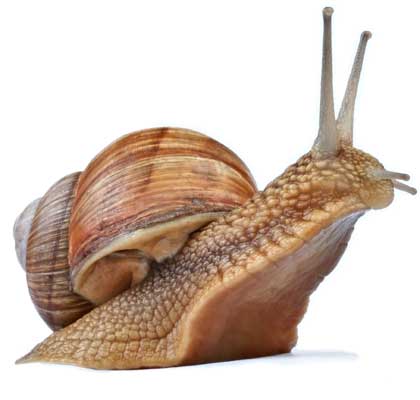 Class
52 Monday
3/16/20
Class
52 Monday
3/16/20Warm-up:
A log is 64 feet long. Starting from one end of
the log, a special snail slimes its way toward the other end of the log, covering half of the
remaining distance each day.
1. How many days does it take the snail to reach a point
one foot from the other end of the log?
2. How does this relate to finding the age of rocks?
Today:
- Quiz: relative dating
- Work on absolute dating notes:
Homework:
-
Everything is homework, for now.
Warm-up:
The
diagrams on the right show some rock layers in two different
parts of the world.
1. What do the buried fish,
snail, plant, bug, and human represent?
2. Which layer is probably
older, Layer S (in diagram A) or layer H (in diagram B)?
3. Which layer is probably the
oldest of all? Why?
4. Which layer is probably the
youngest of all? Why?
Today:
- Return tests and projects. If you missed the test, take it during Flex block. I'm in room C211. AFter this week, I will enter zeroes for any students who haven't taken the test.
- Turn in projects if you haven't already. Unless you were absent, your project grade is zero if you have not turned it in.
-
Rock dating
-
Finish Ages of Rocks, Part 1
-
Begin Ages of Rocks, Part 2
-
Handouts/Links:
Homework:
-
Quiz next class over relative dating. Similar to part 1 of the practice test on the last page of Ages of Rocks, Part 2
Warm-up:
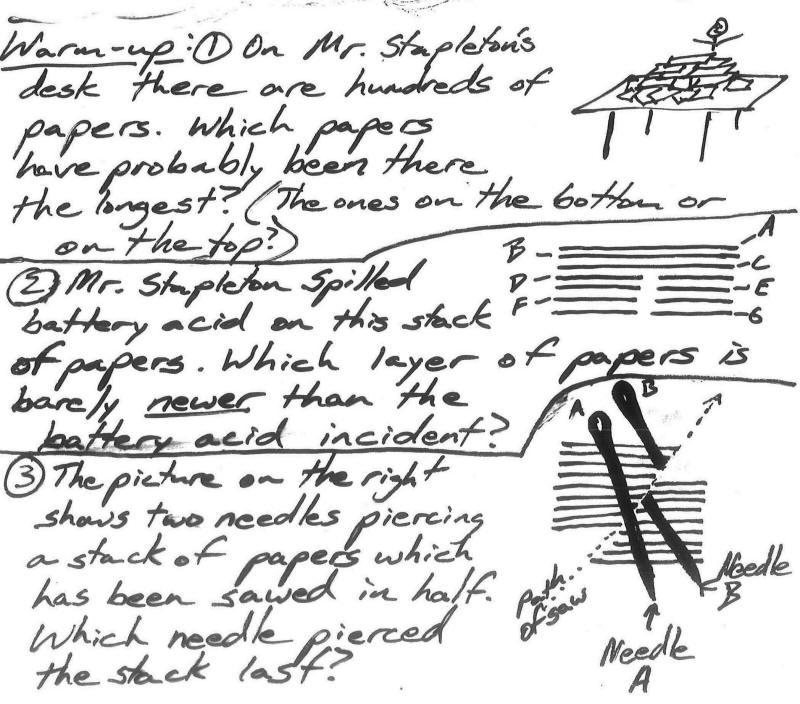
Today:
-
Test
-
Turn-in all projects
-
Rock dataing
Handouts/Links: Ages of Rocks, Part 1
Homework:
-
None
 Class
51 Friday
3/6/20
Class
51 Friday
3/6/20Warm-up:
1. When, exactly, does the time change this weekend?
2. Do we move clocks forward or backward?
3. What effect does this have on our days?
4. The diagram on the right shows a cross forming two line segments of coins. The vertical segment has 5 coins and the horizontal segment has 4 coins. How can you form two segments of 5 by moving just one coin?
Today:
-
Return Projects
-
Quiz #4
-
Test next class
-
Next unit -- rock dating.
Homework:
-
Test next class over plate tectonics
-
Projects are due when you turn in your test.
 Class
50 Wednesday
3/4/20
Class
50 Wednesday
3/4/20Warm-up: How many days until the spring equinox? What happens on the spring equinox?
Today:
-
Return practice quizzes and projects
-
Fix-up projects
Homework:
-
Quiz next class.
Warm-up:
1. I was present at the beginning of eternity. I will be at the end of time and space, the beginning of every end, and the end of every place. What am I?
2. What 5 letter word does almost every english speaker pronounce wrong?
3. There are three misteakes in thi sentence. What are they?
Today:
-
Work on Plate Tectonics Map Project (Example project)
-
Quiz -- using your project.
Homework:
-
If your project isn't quite finished, and you want to finish it over break, you can take it home.
 Class
48 Tuesday
2/18/20
Class
48 Tuesday
2/18/20Warm-up:
1. What volume of dirt is in a hole that is 3 feet wide, 4 feet long, and 2 feet deep?
 2. A four foot long ladder hangs over the side of a boat.
The top of the ladder is two feet above the water line.
When the tide rises three feet, where will the top of the ladder
be?
2. A four foot long ladder hangs over the side of a boat.
The top of the ladder is two feet above the water line.
When the tide rises three feet, where will the top of the ladder
be?
3. A child throws a stick across a river. A dog retrieves the stick without getting wet. How?

Today:
-
Return Quizzes
-
Work on Plate Tectonics Map Project (Example project) --
-
Updated Due Date: middle of class on Thursday (40 minutes of work time on Thursday).
-
Homework:
-
Quiz next class over the features of each plate boundary type (or hotspot). The quiz will be like these practice questions, but it will be shuffled.
1. Where are the ocean trenches?
2. Where do the most explosive eruptions occur?
3. Which area is like Hawaii?
4. One of the plate features we discussed in class is missing. Which one is missing?
5. Where is the sediment, and what explains its pattern of thickness?
6. In how many locations can gentle eruptions occur?
5. How many subduction zones are there, and where are they?
Today:
-
Return Quizzes
-
Return video questions
-
Quiz over identifying plate features on maps and matching them to real locations on the Earth
-
Begin Plate Tectonics Map Project (Example project) -- create a wordless illustration of all of the tectonic features we have discussed in class. The diagram should represent one continuous landscape.
-
Your diagram must show two views of your tectonic features, a map view and a cross-section view. The two views must be aligned, one above the other.
-
Your diagram must be scaled to span 4-6 sheets of copier paper, taped together.
-
Your cross section view must show all of the features from class, except for a transform boundary. Your map view must show all of the features, including a transform boundary.
-
Mafic and felsic materials must have their own, appropriate color or shade. Ocean crust and mantle material should have slightly different colors or shades, so that someone can tell them apart.
-
You must show where volcanoes and earthquakes can occur, but you may not use words.
-
Your projected will be graded on completeness (all of the features), correctness, and neatness. It doesn't have to be super-neat for full credit, but it should be easy to read and understand. Some of you will have to work harder at this than others.
-
You may look at this project when you take your unit test.
-
Due Date: end of class on Thursday
-
Homework:
-
Eventually, we will have one more quiz over the features of each plate boundary type (or hotspot). You may use your illustration on the quiz, and also on the final test.
 Class
46 Wednesday
2/12/20
Class
46 Wednesday
2/12/20Warm-up: The diagram on the right shows a map view of a plate boundary.
1. Where should there be volcanoes? What types of volcanoes are they?
2. Where should a trench be located?
3. Where would deep, medium, and shallow earthquakes occur?
4. Where in the world is there a plate boundary like this one?
Today:
-
Quiz retake over properties of mafic and felsic rock.
-
Finish Volcano! (National Geographic).
Homework:
-
Quiz next class over questions like numbers 7-20 in the practice on the last page of Plate Tectonics, Part 2. Here's a video of some test review
 Class
45 Monday
2/10/20
Class
45 Monday
2/10/20Warm-up: What trends do you see in this week's pressure (black line), temperature (red line) and weather? How are those trends related?
Today:
-
Complete the practice questions at the end of Plate Tectonics, Part 2.
-
Answer questions while you watch Volcano! (National Geographic).
Homework:
-
Quiz retake next class over properties of mafic and felsic materials (study page 1 of these notes -- Plate Tectonics, Part 2)



 Class
44 Thursday
2/6/20
Class
44 Thursday
2/6/20Warm-up: At a Subduction Zone, one plate dives beneath another.
1. Which picture on the right was taken near a subduction zone?
2. Do subduction zones occur over especially hot parts of the mantle or relatively cool parts of the mantle?
3. At subduction zones, are there shallow earthquakes, deep earthquakes, or both?
Today:
-
Quiz over mafic and felsic rocks.
-
Finish plate boundary drawings
-
Answer questions while you watch Volcano! (National Geographic).
Homework:
-
None


 Class
43 Tuesday
2/4/20
Class
43 Tuesday
2/4/20Warm-up: How are the items on the right similar? How are they different?
Today:
-
Return quizzes.
-
Continue drawing plate boundaries. Notes Plate Tectonics, Part 2.
-
How to study for the quiz.
Homework:
-
Study for quiz next class over the first page of these notes (

 Class
42 Friday
1/31/20
Class
42 Friday
1/31/20Warm-up:
If I boil some water and some spaghetti sauce, which one will splatter more? Why?
Today:
-
Quiz over Plate Tectonics Notes Part 1
-
Begin drawing plate boundaries. Notes Plate Tectonics, Part 2.
Homework:
-
None
 Class
41 Wednesday
1/29/20
Class
41 Wednesday
1/29/20Warm-up:
1. Identify the layers of the Earth in the diagram on the right.
2. Describe the materials in each layer.
3. Describe patterns of density and pressure throughout the Earth's layers.
Today:
-
Discuss science electives -- write what you want to take on a note card
-
Continue Plate Tectonics. Plate Tectonics Notes Part 1
-
Complete the "practice" in Plate Tectonics Notes Part 1
-
Begin drawing plate boundaries. Notes Plate Tectonics, Part 2.
Homework:
-
Quiz next class. Study the notes and the practice questions.
Warm-up:
Can you identify any of these locations on Earth? Do you know how they formed?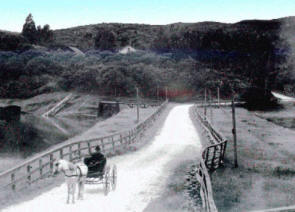



Today:
-
Discuss science electives -- write what you want to take on a note card
-
Begin Plate Tectonics. Plate Tectonics Notes Part 1
-
This Semester:
-
Plate tectonics/rock cycle/rock dating
-
Astronomy (Earth formation and beyond)
-
Climate Change
-
-
Videos?
Videos On Demand:
-
Layer video (around 2-7 minutes)
-
Convection Currents Video (16-20??)
-
Homework:
-
None
Warm-up: Big Questions #5 and 6...
5. Describe the steps in the water
cycle.
6. What types of weather are
associated with high pressure and low pressure?
Why?
Today:
-
Check, review, and video the midterm review
-
Study time:
-
Make study notes
-
Study the big questions
-
Make/improve note cards for the mapping portion of the exam
-
-
Exam Format:
-
40-60 multiple choice questions -- 1 point each (includes map drawing portion)
-
Circulation of atmosphere drawing -- 5 points
-
8 Big Questions -- about 3 points each
-
Homework:
-
midterm review -- Due next class -- Tuesday, 1/14
-
Study the "Big Questions" in the midterm review.
Warm-up: Big Questions #3 and 4
3. When you make a cloud in a bottle, how what do you do to make the cloud disappear? Why does this work.
4. Explain, in
detail, why clouds form in the real world.
Today:
-
Check for late completion of homework: Practice Quiz #2 in the midterm review
-
Finish the North America map -- or work on completing the midterm review?
Homework:
-
midterm review -- Due next class -- Tuesday, 1/14
-
Study the "Big Questions" in the midterm review.
Warm-up: Big Questions #1 and 2
1. Why is air pressure different at different heights and in different parts of the world?
2. Explain why hot air balloons rise when the pilots turn on the flame. Make sure that you explain what is happening to the balloon’s mass, volume, and density -- and explain why.
Today:
-
Check/review homework: Practice Quiz #2 in the midterm review
-
One more practice quiz. Climate mapping quiz #3.
Homework:
-
prepare for the quiz next class -- you can use a 3"x5" note card, as long as it doesn't have any drawings
-
midterm review -- Due next Tuesday -- 1/14
-
Study the "Big Questions" in the midterm review.

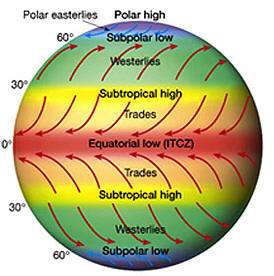 Class
36 Monday
1/6/20
Class
36 Monday
1/6/20Warm-up:
1) The closer diagram on the right shows the Earth's Prevailing Winds. What causes the prevailing winds?
2) The other diagrams show the jet streams, which are different from both local and prevailing winds. Can you guess what causes the jet streams?

Today:
-
Get midterm review -- Due next Tuesday -- 1/14
-
Finish South America
-
Climate mapping practice Quiz
-
Another practice quiz
-
Midterm Format
-
The "Big Questions" will be short answer.
-
You will have to draw a diagram of pressure belts, winds, and rising and sinking air.
-
The rest will be multiple choice.
-
Homework:
-
Practice Quiz #2 -- Due on Wednesday.
-
midterm review -- Due next Tuesday -- 1/14
-
Study the "Big Questions" in the midterm review.
 Class
35 Thursday
1/2/20
Class
35 Thursday
1/2/20Warm-up:
1. What type of air pressure produces clouds?
2. Are clouds produced when air rises, or when air sinks?
3. The picture on the right shows the direction of wind blowing over a mountain. Where, in the diagram, will there be the most clouds and precipitation? Where will there be the least?
Today:
-
Continue Climate Map Drawing -- Add the rain shadow effect
Homework:
-
None
 Class
34 Thursday
12/18/2019
Class
34 Thursday
12/18/2019Warm-up:
Gyres are circling ocean currents.
1. What causes the gyres to rotate?
2. Why are the west sides of the gyres warm, while the east sides are cold?
Today:
-
Continue Climate Map Drawing -- Notes: Climate map drawing Video from a few years ago (ignore the mountains)
Homework:
-
None
 Class
33 Tuesday
12/16/2019
Class
33 Tuesday
12/16/2019Warm-up:
What can you tell from this
satellite image?
Today:
-
Quiz -- draw the Earth's atmospheric circulation, winds, and pressure belts.
-
Continue Climate Map Drawing -- Notes: Climate map drawing Video from a few years ago (ignore the mountains)
Homework:
-
None
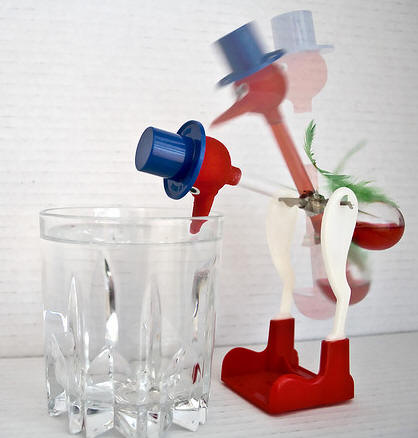 Class
32 Friday
12/13/2019
Class
32 Friday
12/13/2019Warm-up:
Why does the bird keep drinking?
Today:
-
Return tests
-
Discuss upcoming project
-
Finish notes on winds and pressure belts (atmospheric circulation).
-
Begin Climate Map Drawing -- Notes: Climate map drawing
Homework:
-
Prepare for quiz next class -- draw the Earth's atmospheric circulation, winds, and pressure belts.
 Class
32 Wednesday
12/11/2019
Class
32 Wednesday
12/11/2019Warm-up:
Is precipitation generally caused by increasing pressure or by decreasing air pressure? Explain.
Today:
-
Test
-
Finish notes on winds and pressure belts (atmospheric circulation).
-
Begin Climate Map Drawing -- Notes: Climate map drawing
Homework:
-
None
 Class
31 Monday
12/9/2019
Class
31 Monday
12/9/2019Warm-up:
1. What is the difference between a prevailing wind and a local wind?
2. What causes winds to curve?
3. Which way will each of the winds curve on the drawing of the Earth, shown on the right?
4. In the Northern Hemisphere, tornadoes and hurricanes rotate counter-clockwise, but the Coriolis Effect causes winds to turn clockwise. How can this be?
Today:
-
Check and go over test review materials -- Hot air balloon calculations and water cycle questions.
-
Continue notes on winds and pressure belts (atmospheric circulation).
-
Begin Climate Map Drawing -- Notes: Climate map drawing
Homework:
-
Prepare for test next class. You may use a note card on the hot air balloon portion only.
 Class
30 Thursday
12/4/2019
Class
30 Thursday
12/4/2019Warm-up: I am going to fill a petri dish with water and sprinkle pepper on top of the water. Then I am going to use straws to blow on the water in the directions shown on the right.
1. What pattern of "ocean" current(s) will develop in each situation?
2. What will happen to the pepper if I touch the surface of the water with a small drop of soap? Why?
Today:
-
Return quizzes
-
Start notes on winds and pressure belts (atmospheric circulation).
-
Get test practice materials.
Homework:
-
Test next Wednesday. If you complete the practice materials that were handed out today by next class (Monday), you can get additional credit on the test.
 Class
29 Tuesday
12/3/2019
Class
29 Tuesday
12/3/2019Warm-up: What is the purpose of sweating? When does it work best? When does it not help? When it works, why/how does it work? Where does sweat come from?
Today:
-
Quiz over this... Practice Questions -- Water Cycle and Cloud Formation
-
Finish video and video questions -- National Geographic Cyclone
Homework:
-
None
 Class
28 Friday 11/22/2019
Class
28 Friday 11/22/2019Warm-up: The diagram on the right shows the movement of air in the Earth's atmosphere. What makes the air move?
Today:
-
Return quiz corrections
-
Practice quiz.
-
Video -- National Geographic Cyclone
-
Check your quiz score.
Homework:
-
Quiz next class -- unless you like your grade from today.
 Class
27 Wednesday 11/20/2019
Class
27 Wednesday 11/20/2019Warm-up:
1. Does the cloud on the right look like it was formed by rising air or by sinking air?
2. Why would air do that?
3. Why would that form a cloud?
Today:
-
Turn in quiz corrections
-
Discuss slideshow grading.
-
Finish Notes: Cloud Formation.
-
-
Page 3
-
Homework:
-
Study for a quiz next class, over the water cycle and cloud formation. The quiz will come directly from the practice questions.
 Class
26 Monday 11/18/2019
Class
26 Monday 11/18/2019Warm-up:
Identify the parts in the water cycle and tell how they happen.
Today:
-
Return quizzes.
-
Discuss slideshow grading.
-
Finish Notes: Cloud Formation.
-
Pages 1-2
-
-
-
Page 3
-
Homework:
-
Correct your quiz. For each number that you missed, explain how to answer that question correctly next time.
-
If you want a better grade, fix your hot air balloon project.
 Class
25 Thursday 11/14/2019
Class
25 Thursday 11/14/2019
Warm-up:
1. I am going to make a puddle by pouring some water on my desk. What will happen to the puddle? Why?
2. Does this ever happen in reverse?
3. What's the difference between boiling and evaporation?
Today:
-
Remember your new seats
-
Quiz -- Hot Air Balloon Calculations
-
Notes: Cloud Formation , cloud in a bottle
-
Slideshows will be graded by Monday.
Homework:
-
None
 Class
24 Friday 11/8/2019
Class
24 Friday 11/8/2019
Warm-up:
1. What are clouds made of? Why don't they fall?
2. How fast will a piece of chalk fall?
Today:
-
New seats
-
Finish practice quiz number 2. Check out the video.
-
Slideshows are due.
Homework:
-
Study/practice for the quiz. Use this video to prepare. For more practice, print this pdf version of Practice Quiz 2. Prepare a notecard to use when you take the quiz.
 Class
23 Wednesday 11/6/2019
Class
23 Wednesday 11/6/2019
Warm-up: The map on the right shows our school, and the circled compass indicates North. The wind map shows the predicted wind direction. Where should we release our balloons? Why?
Today:
-
Launch balloons outside
-
Work on practice quiz number 2. You will have a quiz like this on Tuesday.

Homework:
-
Finish practice quiz number 2. (unless you have already finished it)
-
Finish slideshow (unless you have already finished it)
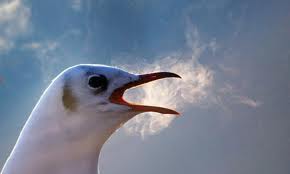 Class
22 Monday 11/4/2019
Class
22 Monday 11/4/2019
Warm-up:
1. Why can't we "see our breath" right now?
2. When we do see our breath, what are we actually seeing?
3. I can do something that will make my breath visible. Can you guess what I'm going to do?
4. Can you guess how this concept explains snow-capped mountains?
Today:
-
Change your slideshow share settings to "anyone with a link," and then fill out the Balloon Slideshow Turn-in Form.
-
Finish (or double-check) balloon calculations today.
-
Finish slideshows before Friday.
-
Launch balloons on Wednesday?
-
Next big topic -- weather and climate
Homework: Slideshows are due by Friday. Make a plan to get them completed. You will not have class time for this after today.
 Class
21 Thursday
10/31/2019
Class
21 Thursday
10/31/2019
Warm-up:
1. What will happen if I put a candle in a dish of water, and then I cover the candle with a beaker? Why?
2. How is this like a hot air balloon?
Today:
-
Return quizzes and explain grading.
-
Change your slideshow share settings to "anyone with a link," and then fill out the Balloon Slideshow Turn-in Form.
-
Work on slideshows and/or finish collecting balloon data.
Homework: None
Warm-up: None
Today:
-
Make a copy of this slideshow template
-
Rename the copy of the slideshow and share it with your partner(s).
-
Read the prompts on the slides and do what they tell you to do. Remove the prompts and replace them with your own information, drawings, and photos.
Homework: None
 Class
19
Friday 10/25/2019
Class
19
Friday 10/25/2019 Warm-Up: How do balloon pilots steer balloons?
Today:
- Test
- Discuss next class.
-
Complete Hot Air Balloon Practice Quiz #1.
Calculation links:
-
Weather underground (for dewpoint and air pressure)
Homework:
-
None
 Class
18
Wednesday 10/23/2019
Class
18
Wednesday 10/23/2019 Warm-Up:
2. Have you ever made anything like this in the bathtub?
3. What is a vacuum? Why is it important?
4. According to the diagram, the current air pressure is 29.92 sinHg. What does that mean?
5. The substance in the barometer is mercury. Would this work with water?
Today:
- Check homework:Turn-in quiz corrections
-
As a class, finish
Practice Balloon Calculations
Preview of balloon slideshow. Slideshow template.
Calculation links:
-
Omnicahttps://www.omnicalculator.com/physics/air-densitylculator for finding air density
-
Weather underground (for dewpoint and air pressure)
Homework:
-
Test next class over the material that was on the Temperature and Pressure Quiz
 Class
17
Monday 10/21/2019
Class
17
Monday 10/21/2019 Warm-Up:
1. How do people fill up real hot air balloons without burning them?
2. How does a hot air balloon work? What changes in the early stages of balloon flight? Mass? Volume? Density?
Classroom VideoToday:
- Review the quiz answers and make a video explaining them. Then return the quizzes.
-
As a class, finish
Practice Balloon Calculations
Individually [with your partner(s)], complete the Actual Balloon Calculations Sheet.
As a group, complete the balloon project slides. Make a copy of this template. Then rename it with your name(s) and share it with your partner(s) and jstapleton@ewsd.org.
- Take Balloon Measurements measurements.
-
Mass lifted
-
Empty mass
-
Time to fill your balloon
***Shop Vac Fill Rate is 0.0025m3/second (0.0025 cubic meters per second)
Calculation links:
-
Omnicahttps://www.omnicalculator.com/physics/air-densitylculator for finding air density
-
Weather underground (for dewpoint and air pressure)
Homework:
-
Read all of the quiz questions that you got wrong. On a sheet of paper, list each quiz question that you got wrong. Write the correct answer and explain why that answer is correct.
 Class
16
Monday 10/14/2019
Class
16
Monday 10/14/2019 Warm-Up:
1. Should our balloons fly better on a hot day or on a cold day? Why?
2. The density of the air around us changes. What factors might affect air's density?
Today:
- Quiz
-
As a class, begin
Practice Balloon Calculations
- Work on hot air balloons -- add fuel platforms.
- Begin taking measurements.
-
Mass lifted
-
Empty mass
-
Time to fill your balloon
***Shop Vac Fill Rate is 0.0025m3/second (0.0025 cubic meters per second)
Calculation links:
-
Omnicahttps://www.omnicalculator.com/physics/air-densitylculator for finding air density
-
Weather underground (for dewpoint and air pressure)
Homework: None
 Class
15
Thursday 10/10/2019
Class
15
Thursday 10/10/2019 Warm-Up:
1. How much weight is the balloon on the right able to lift?
2. How can we measure the volume of your balloon?
Today:
- We were supposed to have a test last class, and I forgot about it. I think?
-
Check PowerSchool.
- Work on hot air balloons -- add fuel platforms.
- Begin taking measurements.
-
Mass lifted
-
Empty mass
Time to fill your balloon
Homework:
-
Study! Quiz on Monday over Temperature and pressure notes and practice quiz over temperature and pressure
 Class
14
Tuesday 10/8/2019
Class
14
Tuesday 10/8/2019 Warm-Up:
The picture on the right shows a shrinkwrap sealer like the one we will be using to make hot air balloons. When you press the arm down against the plastic, a light turns on and the wire heats up. After a few moments, the light goes off and the wire cools down.
1. What is happening to the plastic particles near the wire while the light is on?
2. What is happening to the plastic particles near the wire after the light goes off?
3. How does this process seal together the two sheets of plastic?
4. When should you pull away the excess plastic that you want to cut off? Why should you do it at that moment?
5. There is a dial to control how long the wire stays hot. Why is it a problem if the wire stays hot for too long? Not long enough?
Today:
-
Quiz over temperature and pressure
- Return Tests.
- Work on hot air balloons
Homework:
-
None
 Class
13
Friday 10/4/2019
Class
13
Friday 10/4/2019 1. Identify all of the windy places on the map to the right.
2. For each windy place, tell which way the wind is blowing.
3. For the places that are not windy, tell whether the air is rising or sinking.
Today:
-
Test
- Check/review practice quiz over temperature and pressure
- Work on hot air balloons
Homework:
-
Study! Quiz on Tuesday over Temperature and pressure notes and practice quiz over temperature and pressure

 Class
12
Wednesday 10/2/2019
Class
12
Wednesday 10/2/2019 1. Your hot air balloon will need a platform to hold the fuel. Which of these designs looks better? Why?
2. What general rules should you follow as you create your hot air balloon?
Today:
- Return quiz corrections.
Homework:
-
Study! Test next class over the information on the first two quizzes. Here are the practice quizzes, if you want to print new ones to use as practice.

 Class
11
Friday 9/27/2019
Class
11
Friday 9/27/2019 1. When "Fearless Felix" Baumgartner made his record breaking parachute jump, he jumped from a helium balloon. Why did the balloon balloon look so underinflated at first?
2. What happens to helium balloons when they fly away?
Today:
- Turn-in quiz corrections.
- Cut and build a hot air balloon scale models.
- Finish temperature and pressure notes
Homework:
-
Test next friday over the first two quizzes.
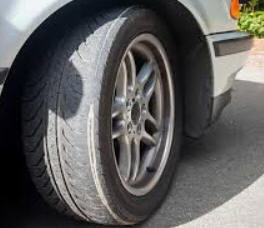
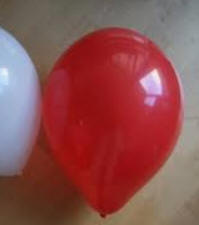
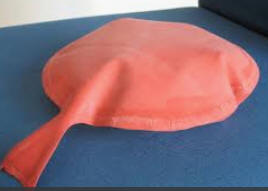 Class
10
Wednesday 9/25/2019
Class
10
Wednesday 9/25/2019 Does air move from areas of low pressure to areas of high pressure, or from high pressure to low pressure? Give some examples.
Today:
- Return and discuss quiz over air pressure
- Low density box award!
- Design, save, print, cut, and build a hot air balloon scale model using CAD [CAD work ran longer than expected. We will cut and build next time]
- Finish temperature and pressure notes
-
Begin practice quiz over temperature and pressure -- we didn't get to this
Homework:
-
**This assignment is 100% required**
Read all of the quiz questions that you got wrong. On a sheet of paper, list each quiz question that you got wrong. Write the correct answer. Explain the answer when necessary.
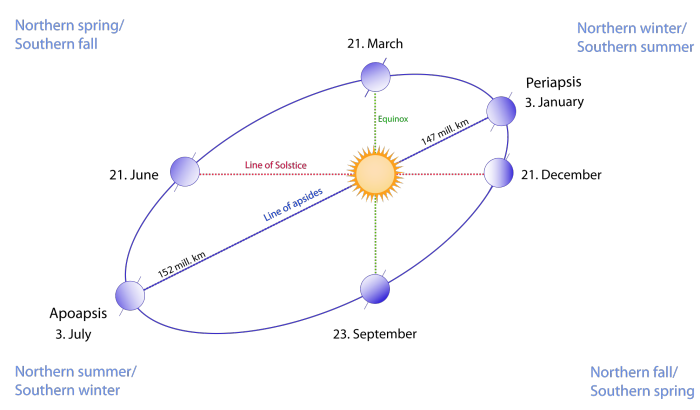 Class
9
Monday 9/23/2019
Class
9
Monday 9/23/2019 1. What happened this morning at 3:50 AM?
2. How do the hours of daylight during the fall compare to the hours of daylight in the spring?
3. How do the hours of daylight in the fall compare to the hours of daylight in the winter?
4. How long is a centimeter?
Today:
- Quiz over air pressure
- Finish making a low density box
- Design, save, (cast?) print, cut, and build a hot air balloon scale model using CAD.
Homework: None
 Class
8
Wednesday 9/19/2019
Class
8
Wednesday 9/19/2019 1. What will happen if I put a balloon over a flask of water and then boil the water?
2. What will happen if I put the flask on ice?
3. Will the balloon behave differently if I put it on after the water is already boiling?
4. What will happen if I inflate a balloon, tie it off, and then place it in cold water?
5. Why does all of this happen?
Today:
- Where we're headed -- preview of classes to come, starting with #45, last year.
- Return corrected quizzes
- Check/review Air pressure practice quiz
- Finish temperature and pressure notes
-
Preparing for hot air balloons... Calculating Densities of Boxes and making a low density box
Homework: Quiz next class over air pressure notes and practice quiz.
 Class
7
Tuesday 9/17/2019 (short class)
Class
7
Tuesday 9/17/2019 (short class)1. Should we check on the egg?
2. How can I insert a boiled egg inside a milk bottle?
3. If I can get the egg inside, how do I get it out?
Today:
- Turn-in homework -- Quiz corrections
- Check PowerSchool grades -- J and L
- Finish Air pressure notes. Filled-in Air pressure notes
- How many psi can a shop vac generate? How many students can a shop vac lift?
- Air pressure practice quiz
-
Coming up:
- Quiz next Monday. Test next Friday over the two quizzes.
- Hot Air Balloon Project -- maybe begin Thursday?
- New Stuff: Relating Temperature, Pressure, Mass, Volume, and Density
Homework: Finish Air pressure practice quiz.

 Class
6
Friday 9/13/2019
Class
6
Friday 9/13/20191. Does an egg float or sink in water?
2. Does it matter whether the water is saltwater or freshwater?
3. What's special about the Dead Sea?
4. How can I fill a jar so that half of the jar's volume is freshwater, and the other
 half
of the jar's volume is saltwater -- without putting any kind of
divider in the jar?
half
of the jar's volume is saltwater -- without putting any kind of
divider in the jar? Today:
- Return quizzes
- Check PowerSchool grades
- Discuss tonight's homework -- quiz corrections
- Air pressure notes. Filled-in Air pressure notes
- How much air pressure can you generate?
Homework:
**This assignment is 100% required**
Read all of the quiz questions that you got wrong. On a sheet of paper, list each quiz question that you got wrong. Write the correct answer, and explain how you can tell that is the correct answer. Your answers must explain your reasoning in a way that shows you can get the problem right the next time. For example, if you missed the question "which object is most dense?" your explanation should be something like "object C is the most dense because it is the most crowded inside." You should not write "object C is the most dense because it has the highest density." That isn't helpful.
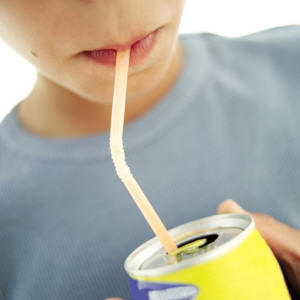 Class
5
Wednesday 9/11/2019
Class
5
Wednesday 9/11/2019Suppose you're standing on a balcony, and you want to steal the drink of someone standing below. You carefully lower a tube into the drink and suck up the liquid before anyone notices. Could this really work?
Today:
- Quiz over physical properties of matter
- Air pressure notes. Filled-in Air pressure notes
- How much air pressure can you generate?
Homework: None
 Class
4
Monday 9/9/2019
Class
4
Monday 9/9/2019An iceberg is floating in a lake. What will happen to the water level if the iceberg suddenly melts? Why? How can we test this?
Today:
- Warm-up
- Return submarine procedures -- 2 were missing
- Check/review homework: practice quiz
- Finish notes on Physical properties of matter Physical Properties Notes -- Filled-in
- Finish the submarine activity -- what is happening and why
- Air pressure notes.
- Check on the icebergs and the lake.
Homework:
- Quiz next class. Study! It will be very similar to the practice quiz. practice quiz
 Class
3
Thursday 9/5/2019
Class
3
Thursday 9/5/2019Why do raisins "dance" when you put them in carbonated water? What is carbonated water?
Today:
- Warm-up
- Turn in signed course expectations.
- Check homework and finish Physical properties of matter Physical Properties Notes -- Filled-in
- Film Canister Submarine activity -- Refine your
procedure. Watch the submarine carefully so that you can
figure out what is happening and why. One one sheet of
paper...
- Write a procedure for Mr. Stapleton to test (possibly).
- Describe what is happening to the submarine's mass, volume, and density -- while the submarine is sitting on the bottom, getting ready to rise back up.
- Explain why each of those properties is changing in that way. If a property is not changing, explain why it is not changing.
- Complete the
practice quiz.
Homework:
- If we didn't finish the practice quiz in class, finish it for homework.
- Share your course expectations handout with your parents. Have them sign and return it by Next Monday (9/9).
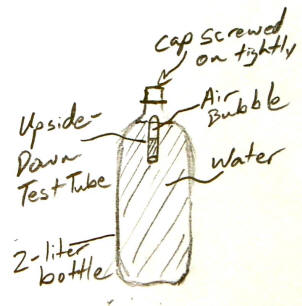 Class
2
Tuesday 9/3/2019
Class
2
Tuesday 9/3/2019This bottle on the right contains a "cartesian diver." The diver dives when the bottle is squeezed, and the diver rises when the bottle is released.
Why does this happen?
Today:
- Warm-up
- Turn in signed course expectations slips.
- Continue Physical properties of matter Physical Properties Notes -- Filled-in
- Film Canister Submarine activity
Homework:
- Continue the properties of matter sheet through number 21 (complete #19-22 and 24).
- Share your course expectations handout with your parents. Have them sign and return it by Next Monday (9/9).
 Warm-Up:
Warm-Up: 1. What would happen if you made a hole through the center of the Earth, and you jumped in?
2. For how long would you fall?
Excel spreadsheet -- falling through the earth
3. If you made it all of the way through, where would you come out? (antipodes map)
Today:
- Warm-up
- Enter attendance
- Student information sheet
- Check to see if you're on my email list, find my website, and see if your chromebook is working in here.
- Tour website -- www.mrstapleton.com
- Mr. Stapleton slideshow My goals
- Course Expectations and class topics
- Name game, etc.
Handouts:
Homework:
- Share your course expectations handout with your parents. Have them sign and return it by Monday, 9/9.
 Class 0
Tuesday 8/27/2019 (15 minute class)
12:50-1:05
Class 0
Tuesday 8/27/2019 (15 minute class)
12:50-1:05Warm-Up:
1. Use the seating chart to find your seat.
2. Can you point to the North Pole? How can you find it?
Today:
- Find your seat.
- Names (pronunciations etc.)
- Warm-up
Homework: None